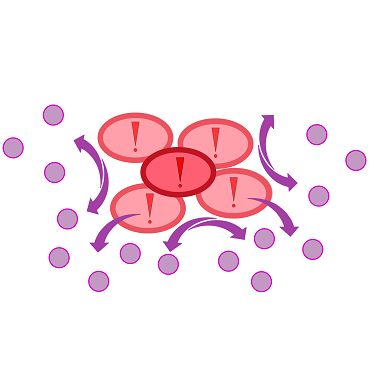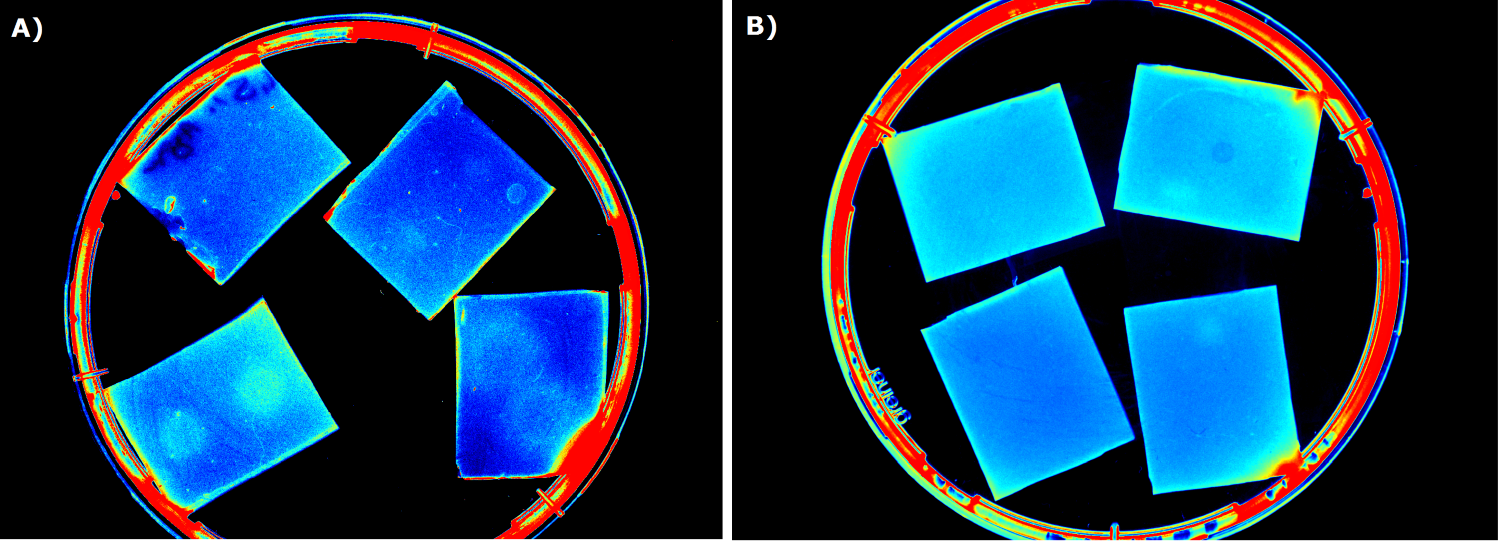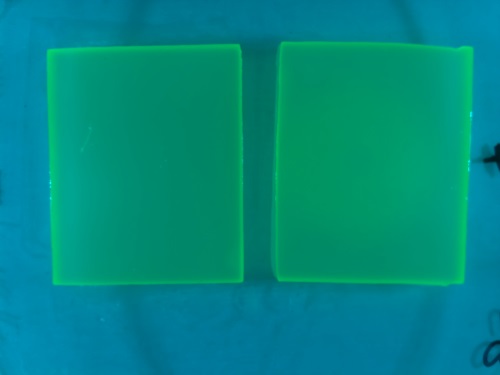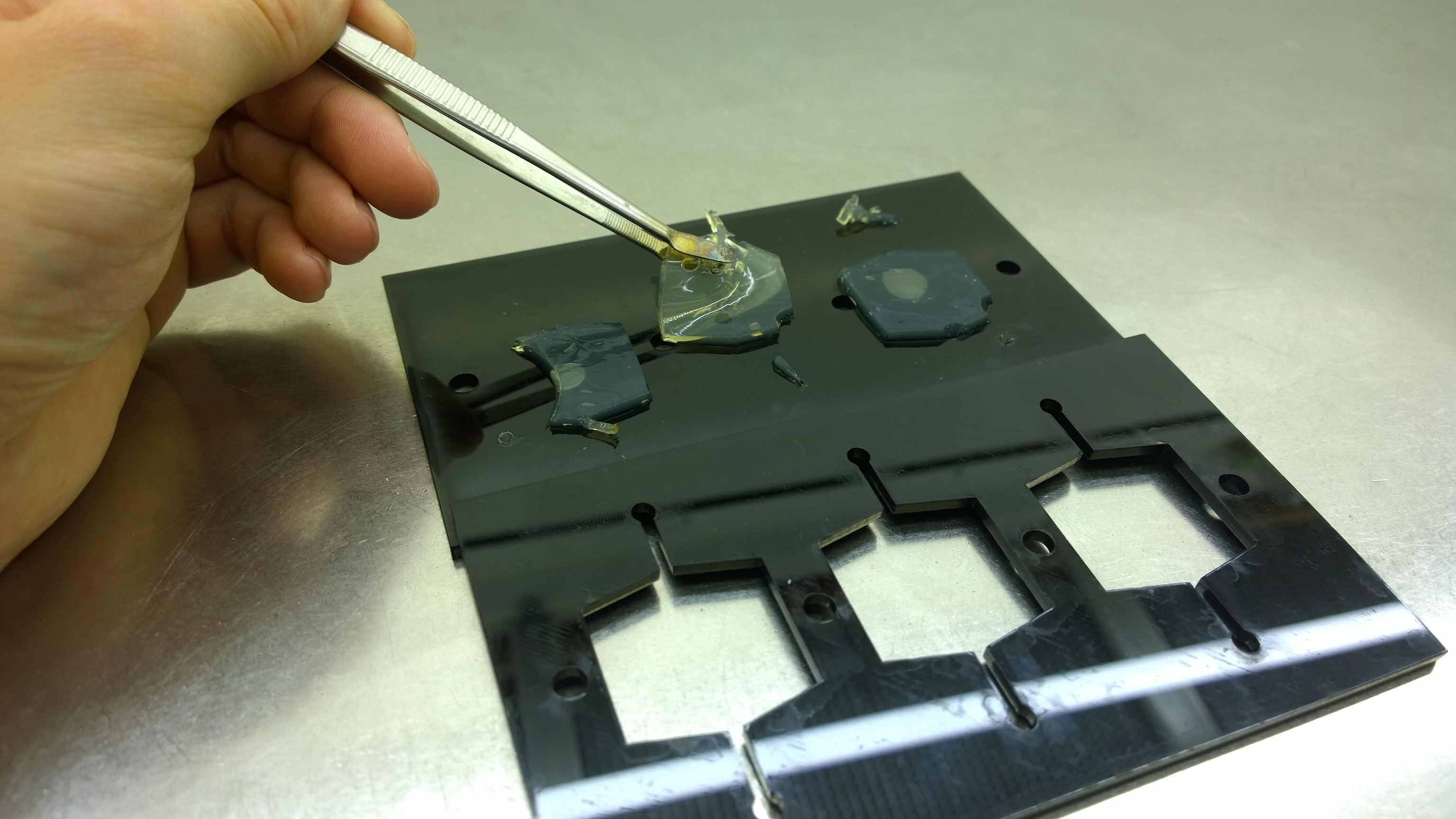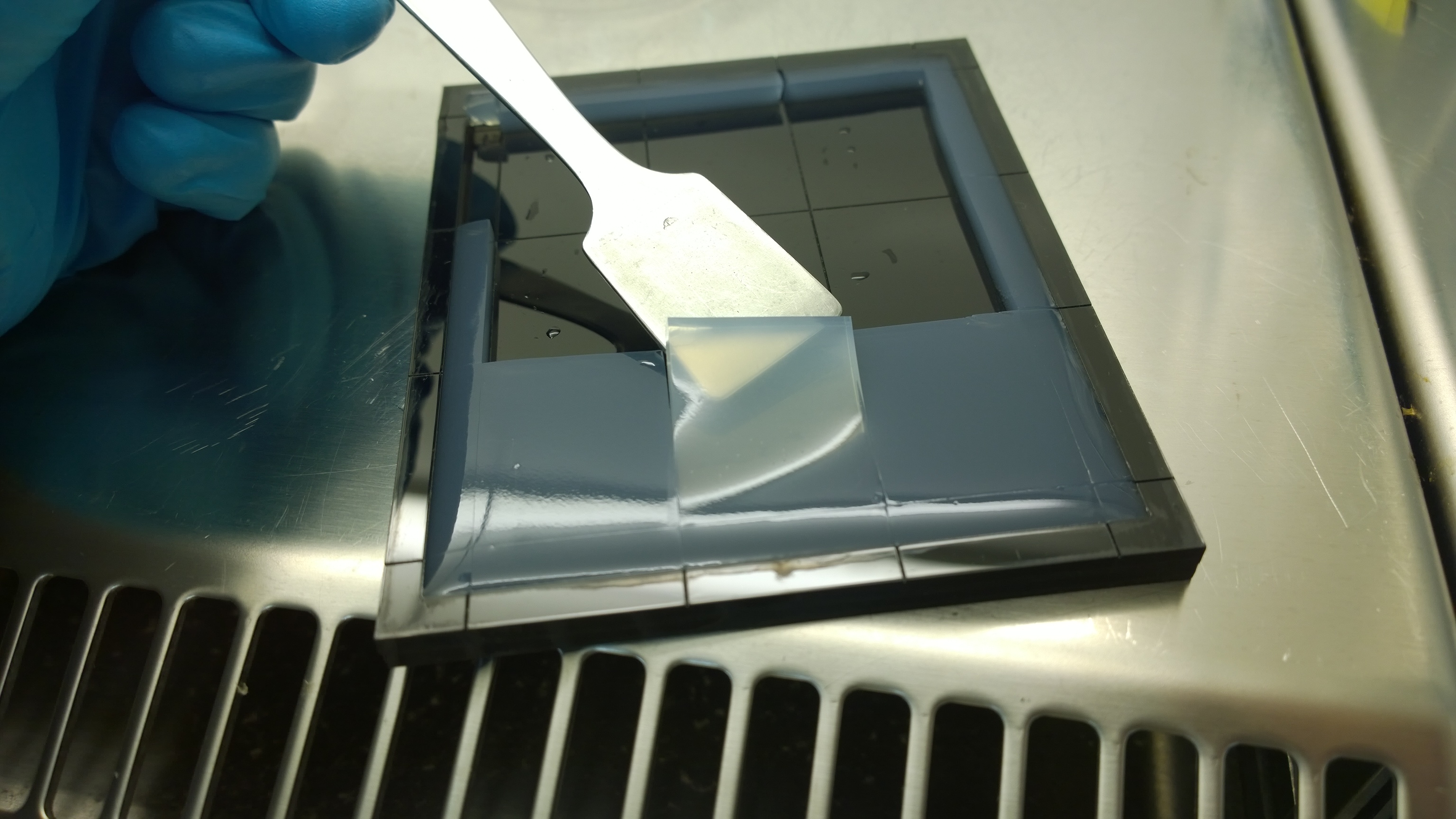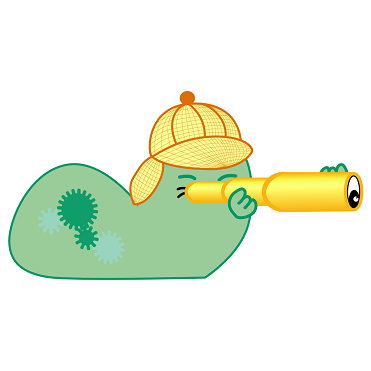Team:Aachen/Project/2D Biosensor
From 2014.igem.org
(→Medium) |
(→Medium) |
||
| Line 125: | Line 125: | ||
<!--Regarding the medium used for our sensor chips, LB medium showed a high background fluorescence when exposed to UV light in the Gel Doc. Surprisingly, the background fluorescence resulting from the LB medium was too high to detect a signal emitted by our sensor cells. Hence, minimal media (NA, M9, Hartman (HM)) was used to minimize background fluorescence, but this approach resulted in less to no growth of our sensor cells. | <!--Regarding the medium used for our sensor chips, LB medium showed a high background fluorescence when exposed to UV light in the Gel Doc. Surprisingly, the background fluorescence resulting from the LB medium was too high to detect a signal emitted by our sensor cells. Hence, minimal media (NA, M9, Hartman (HM)) was used to minimize background fluorescence, but this approach resulted in less to no growth of our sensor cells. | ||
| - | |||
| - | |||
| - | |||
| - | |||
In our device ''WatsOn'', optimized wavelengths of 450 nm and 480 nm were used for excitation of iLOV and GFP, respectively. When exposed to either excitation wavelength TB medium, which is basically an improved LB medium and highly supports cell growth, showed strong background fluorescence in our own device. High background fluorescence was also observed for TB medum when using the Gel Doc. In contrast to the Gel Doc LB medium showed minimal fluorescence in our device ''WatsOn'' and no difficulties in cultivation of our ''Cellocks'' were observed. Because of the reduced fluorescence compared to TB medium when using ''Watson'' for sensor chip evaluation and because of sufficient cultivation conditions for our 'Cellocks'' LB medium was chosen over TB mediium for sensor chip manufacturing. --> | In our device ''WatsOn'', optimized wavelengths of 450 nm and 480 nm were used for excitation of iLOV and GFP, respectively. When exposed to either excitation wavelength TB medium, which is basically an improved LB medium and highly supports cell growth, showed strong background fluorescence in our own device. High background fluorescence was also observed for TB medum when using the Gel Doc. In contrast to the Gel Doc LB medium showed minimal fluorescence in our device ''WatsOn'' and no difficulties in cultivation of our ''Cellocks'' were observed. Because of the reduced fluorescence compared to TB medium when using ''Watson'' for sensor chip evaluation and because of sufficient cultivation conditions for our 'Cellocks'' LB medium was chosen over TB mediium for sensor chip manufacturing. --> | ||
| + | {{Team:Aachen/FigureFloat|Aachen_Chip_medium_geldoc.png|title=Differend medium in the Gel Doc™|subtitle=complex media (LB) exhibited high background fluorescence while less background fluorescence was observed with the minimal media (HM, M9, NA).|right|width=500px}} | ||
| + | {{Team:Aachen/FigureFloat|Aachen_5days_K131026_neb_tb_1,5h.jpg |title=Testing our chips' shelf-life.|subtitle= [http://parts.igem.org/Part:BBa_K131026 K131026] in NEB induced after 5 days of storage at 4 °C. The right chip was induced with 0.2 µL of 500 µg/mL HSL, and the image was taken after 1.5 h.|left|width=500px}} | ||
To determine which medium enables fast and reliable fluorescence response detection of our chip system, the growth behavior on as well as the fluorescence properties of several media have been investigated. The complex media LB, TB and NA and the minimal media M9 and HM were tested. | To determine which medium enables fast and reliable fluorescence response detection of our chip system, the growth behavior on as well as the fluorescence properties of several media have been investigated. The complex media LB, TB and NA and the minimal media M9 and HM were tested. | ||
Because of the reduced background fluorescence compared to TB medium when using Watson for sensor chip evaluation and because of sufficient cultivation conditions for our 'Cellocks, LB medium was chosen for sensor chip manufacturing (table below). | Because of the reduced background fluorescence compared to TB medium when using Watson for sensor chip evaluation and because of sufficient cultivation conditions for our 'Cellocks, LB medium was chosen for sensor chip manufacturing (table below). | ||
Revision as of 14:38, 17 October 2014
|
|
|
|
|
|
 "
"
